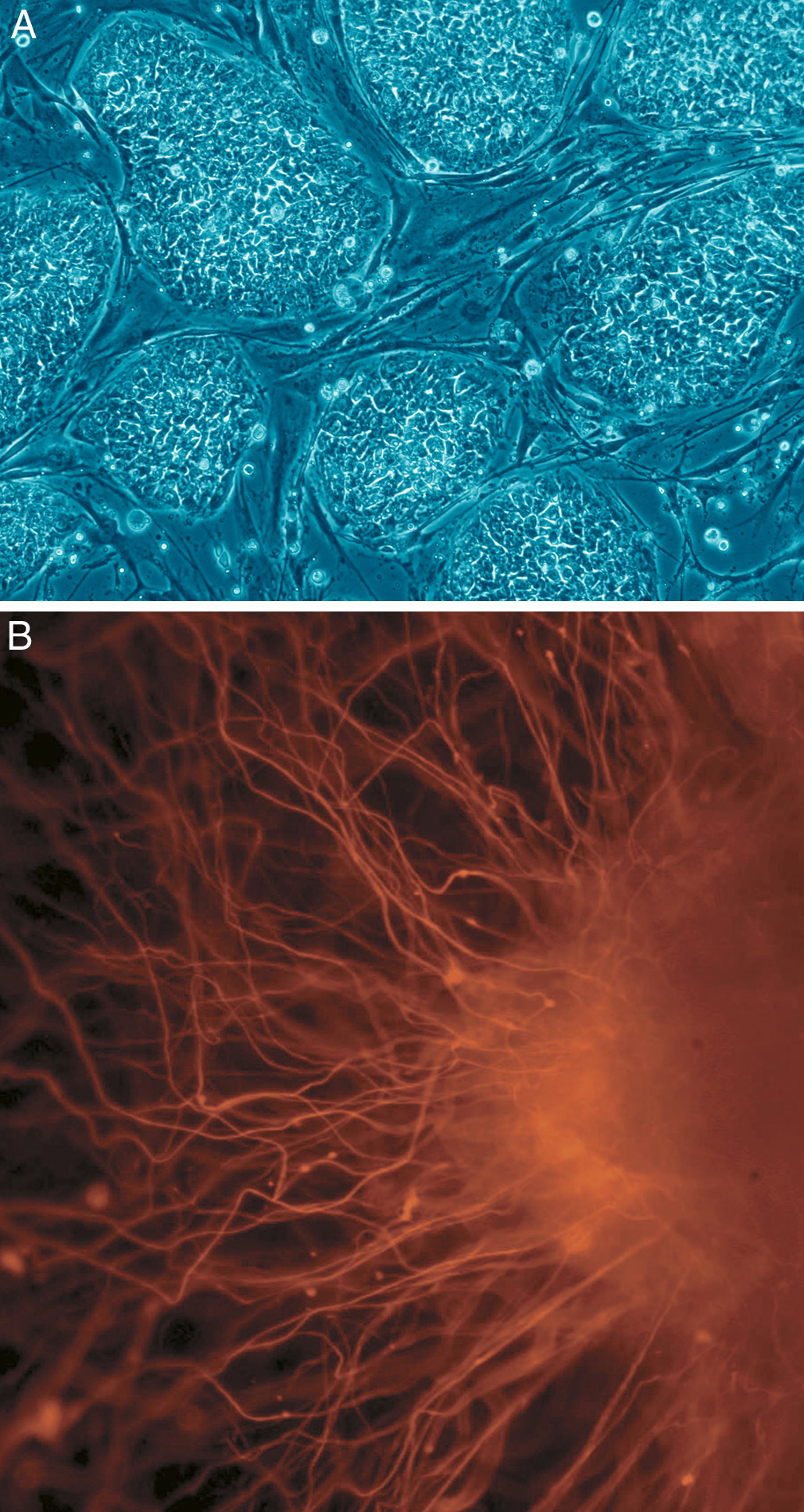Stem cells are cells which have the potential to regenerate tissue over a lifetime. They are found in all organisms that have more than one cell, from plants to you and me. Stem cells renew themselves through a process called mitosis, where the cells split to produce more cells.
Stem cell division, image by Peter Znamenskiy
They are special because when they split they can turn into a different type of cell, like a nerve or blood cell. Because stem cells produce different types of cells they are used to treat diseases where the original cells don’t work properly. One such disease is leukaemia, a cancer where white blood cells can’t fight off infections.
Stem cells were named over 100 years ago in 1908, but research into them really got going in the 1950s. This led to the first successful bone marrow transplant. Bone marrow contains stem cells that can make all the different type of blood cells, to treat blood and immune disorders.

Embryonic stem cells and neurone, image by Nissim Benvenisty
As well as stem cells found in adults like in bone marrow, there are stem cells in embryos which are around 5 days old. Embryonic stem cells are exciting because they can develop into any of the 220 or more cell types in a body, whereas adult stem cells can only develop into some of these. There’s a lot of research into embryonic stem cells as they could be used to treat many diseases.
However, it’s not that simple as there are lots of ethical issues around stem cells. Using embryonic stem cells destroys the embryo, so people wonder if it’s right to end one potential new life to save another. An alternative to embryonic stem cells might be found in amniotic stem cells, which don’t destroy the embryo when used.
Stem cells research is really cutting edge. In the future it’s hoped that stem cell research can be used to treat diseases from Parkinson’s disease to multiple sclerosis and spinal cord injuries.
